Gishwati-Mukura National Park in Rwanda was created recently (2015) and is Rwanda’s fourth national park. The opening of Gishwati Makura National Park is a clear example of the great effort put forth by the government of Rwanda to position the country as a leading tourism destination in East and Central Africa. After the launch of the Congo Nile Trail, restoration of royal heritage sites, opening of the Musanze caves, introduction of professional birdwatching and this new national park, Rwanda’s tourism sector continues to grow by leaps and bounds.
Gishwati-Mukura National Park is located in the western part of Rwanda (the districts of Rutsiro and Ngororero) and covers an area of 13.2 square miles. The park was formed by merging the Mukura and Gishwati forests which lie between the Akagera and Volcanoes National Park in Rwanda. This 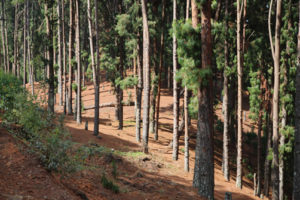 combination of two major forests has a created a park with incredible biodiversity with animals like the Red river hogs, bush bucks, serval cats, tree hyraxes and black-fronted duiker calling it home. The park has 5 primate species including chimpanzees, baboons, golden monkeys, L’Hoest’s Monkeys, vervet monkeys, blue monkeys, black and white colobus monkeys. Gishwati-Mukura National Park is now a primary birding destination in Rwanda. Over 100 species of birds can be sighted here. Key among them are the Old World Warbler, Mountain Yellow Warbler and White-headed Woodhooper. Visitors to the park can also expect to encounter brown forest frogs, toads, chameleons and bush vipers. Let’s discuss the two forests in the national park in more details.
combination of two major forests has a created a park with incredible biodiversity with animals like the Red river hogs, bush bucks, serval cats, tree hyraxes and black-fronted duiker calling it home. The park has 5 primate species including chimpanzees, baboons, golden monkeys, L’Hoest’s Monkeys, vervet monkeys, blue monkeys, black and white colobus monkeys. Gishwati-Mukura National Park is now a primary birding destination in Rwanda. Over 100 species of birds can be sighted here. Key among them are the Old World Warbler, Mountain Yellow Warbler and White-headed Woodhooper. Visitors to the park can also expect to encounter brown forest frogs, toads, chameleons and bush vipers. Let’s discuss the two forests in the national park in more details.
Gishwati and Mukura Forests
Gishwati forest is the larger of the two forests that now make up what is called the Gishwati-Mukura National park. Gishwati was part of a greater forest system that spread out all the way from Nyungwe forest to those in Uganda and central Africa (including Congo). Gishwati forest connected these vast forests to Nyungwe forest for thousands of years before human activity left it isolated.
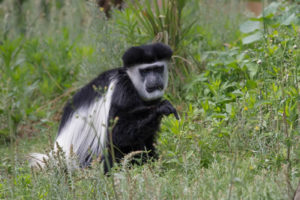 Mukura forest on the other hand is smaller than Gishwati. Encroachment on forest land has left with only 1,200 hectares of forest cover from an original 2,000. The forest has no chimpanzees but the creation of the forest corridor to the Gishwati and Nyungwe will allow the primates in if they choose too. The two forests were almost destroyed after the 1994 genocide in Rwanda. A wave of people who had been displaced by the tragic event returned to the country and settled in the forests. The forest lost much of its vegetation cover through illegal logging, poaching and opening up of farmlands.
Mukura forest on the other hand is smaller than Gishwati. Encroachment on forest land has left with only 1,200 hectares of forest cover from an original 2,000. The forest has no chimpanzees but the creation of the forest corridor to the Gishwati and Nyungwe will allow the primates in if they choose too. The two forests were almost destroyed after the 1994 genocide in Rwanda. A wave of people who had been displaced by the tragic event returned to the country and settled in the forests. The forest lost much of its vegetation cover through illegal logging, poaching and opening up of farmlands.
Even though the government took steps to stop the destruction as we shall see later, a new problem has emerged for Mukura. Mukura forest sits on large deposits of Coltan. Coltan is a mineral used in the making of cellphones, computers and other electronic devices. Coltan may not be as valuable as ivory or gold but is still profitable enough to force poor communities and corrupt individuals to do anything possible to get their hands on it. The no nonsense Rwanda police continues to arrest people mining the lucrative mineral despite stringent measures already in place.
Management and conservation programmes in the park of the Park
Despite a rich Eco-system, the Gishwati Mukura National Park receives less international visitors compared to say Nyungwe or Akagera National Park. One of the main reasons as earlier seen is that the forest lost a lot of its valuable resources to refugees who had been uprooted from different parts of the country. They cleared large parts of the forest for subsistence farming leading to landslides, floods, soil erosion, soil infertility and poor quality of water. The two forests lost over 80 percent of their trees, animals, wild fruits and vegetables.
The government decided to act fast in the later years to stop the illegal occupation of the two forests and degradation. In an attempt to restore the forests to their former levels, the government has worked with several local and international organizations. The first organization to work closely with the government in rehabilitating the forest was the Gishwati Area Conservation Program (GACP). GACP was founded in 2007 by Ted Townsend. The project worked with president Paul Kagame and the Great Ape Trust to stop the mess that was going on in the two forests. The GACP ended and was replaced in 2012 by Forest of Hope Association.
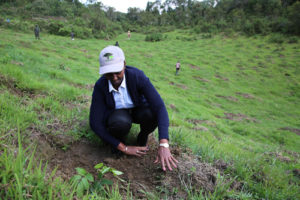 More recently the Rwanda Environment Management Authority and Rwanda Development Board (RDB) have worked closely with the World Bank to take forest rehabilitation to the next level. The World Bank has made over $9.6 million available through the Landscape Approach to Forest Restoration and Conservation (LAFREC) project. LAFREC has helped restore the forests in the national park while also creating job opportunities for the people living close to the national park. LAFREC has not only helped rehabilitate the forests but also organized civic education to teach communities how to manage their land through modern farming and cattle rearing methods. LAFREC has helped position Gishwati-Mukura National park become a leading benchmark for biodiversity conservation globally. Other projects like Forest of Hope Association (FHA) and Areco Rwanda Nziza have also worked to involve the communities, women, youth and schools in the rehabilitation work of the government.
More recently the Rwanda Environment Management Authority and Rwanda Development Board (RDB) have worked closely with the World Bank to take forest rehabilitation to the next level. The World Bank has made over $9.6 million available through the Landscape Approach to Forest Restoration and Conservation (LAFREC) project. LAFREC has helped restore the forests in the national park while also creating job opportunities for the people living close to the national park. LAFREC has not only helped rehabilitate the forests but also organized civic education to teach communities how to manage their land through modern farming and cattle rearing methods. LAFREC has helped position Gishwati-Mukura National park become a leading benchmark for biodiversity conservation globally. Other projects like Forest of Hope Association (FHA) and Areco Rwanda Nziza have also worked to involve the communities, women, youth and schools in the rehabilitation work of the government.
The efforts of the government and development partners is very visible. The size of the Gishwati forest has increased by 68 percent. The Illegal use of forest resources has been virtually eliminated while the chimpanzee population is now at about 35. Both forests have been restored and a buffer zone created out of trees while several local cooperatives have been formed with the intention of involving the community in the park’s decision making.
Agreement with Wilderness Safaris
In order to ensure better management and visibility for the newly created national park, the government of Rwanda through the Rwanda Development Board signed a 25-year agreement with Imizi Ecotourism Development Ltd to develop a tourism and conservation management programme in phases at the 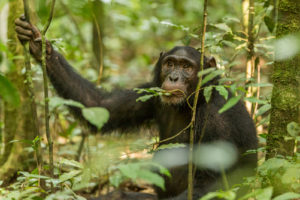 Gishwati-Mukura National Park. Imizi operates under the brand Wilderness Safaris and is a well-known conservation organization with projects in 7 other African countries. Within Rwanda, it operates Bisate Lodge at the Volcanoes National park and Magashi Lodge in Akagera National Park. Whereas Wilderness Safaris is tasked with developing park activities like chimpanzee trekking, the Rwanda Development Board overseas research, monitoring, law enforcement, ranger presence, community engagements and resolving any conflicts with the community.
Gishwati-Mukura National Park. Imizi operates under the brand Wilderness Safaris and is a well-known conservation organization with projects in 7 other African countries. Within Rwanda, it operates Bisate Lodge at the Volcanoes National park and Magashi Lodge in Akagera National Park. Whereas Wilderness Safaris is tasked with developing park activities like chimpanzee trekking, the Rwanda Development Board overseas research, monitoring, law enforcement, ranger presence, community engagements and resolving any conflicts with the community.
The cooperative has helped put a strong foundation that should make the park a top destination for tourists in Rwanda while acting as an alternative destination to mountain gorilla trekking in the Volcanoes national park and game drives in Akagera. The agreement is also designed to position Rwanda as a top country in Africa for sustainable tourism which will benefit communities living close to the national parks.
Attractions in Gishwati-Mukura National Park
There are many reasons why you should visit Gishwati Mukura National Park. Rwanda is already ranked as the fifth safest and most secure country in the world and with the high end eco-tourism project initiated in the park, this is one place not to miss visiting while in the country. Gishwati-Mukura National Park offers visitors a number of tourist activities including bird-watching, primates viewing, guided nature walks, camping and picnics. Let’s look at these activities in more details: –
Primates watching: Gishwati-Mukura almost lost its population of Chimpanzees due to habitat loss and poaching. Their numbers have increased significantly due to the intervention of the government with the support from Wilderness Safaris and other international wildlife conservation agencies. While 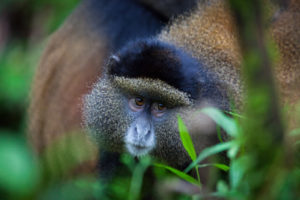 visiting the park, you should expect to see golden monkeys, blue monkeys, L’Hoest’s Monkeys, baboons and off course chimpanzees. In the last two years, Wilderness safaris has embarked on the habituation process for many of the primate families including the chimps. The habituation process ensures that they are no longer afraid of humans to the point of allowing them in their midst. Gishwati-Mukura is soon becoming a leading destination for those who are interested in chimpanzee trekking in Rwanda. Chimpanzee tracking like all park activities starts with a briefing from the park offices about the activity, expectations and what to carry along. While tracking the primates, visitors are almost certain to encounter other forest creatures like wild cats, duikers and forest birds.
visiting the park, you should expect to see golden monkeys, blue monkeys, L’Hoest’s Monkeys, baboons and off course chimpanzees. In the last two years, Wilderness safaris has embarked on the habituation process for many of the primate families including the chimps. The habituation process ensures that they are no longer afraid of humans to the point of allowing them in their midst. Gishwati-Mukura is soon becoming a leading destination for those who are interested in chimpanzee trekking in Rwanda. Chimpanzee tracking like all park activities starts with a briefing from the park offices about the activity, expectations and what to carry along. While tracking the primates, visitors are almost certain to encounter other forest creatures like wild cats, duikers and forest birds.
Birding: Gishwati-Mukura National Park is one of the best places for bird watching in Rwanda. Over 83 species have been recorded in the park among which include 15 species that can only be found in the Albertine Rift like the Grey Crowned Crane, Martial Eagle, Mountain Yellow Warblers, Purple-breasted Sunbird, Red-throated Alethe, Regal Sunbird, Ruwenzori Batis, Ruwenzori Turaco, Weaver birds, Wood hoopoes, Strange weavers and the Stripe-breasted Tit. Birding can be done on foot because the park is not very large. It is important to hire the services of an experienced Guide from the park office to help with identifying the various species and getting to the best birding spots.
Cultural Encounters: In an effort to promote the park as a high end Eco-tourism site, the park management works very closely with the communities living close to the park. To that end the park, various cultural activities are organized to benefit the community and also allow visitors experience the culture of the local people. Cultural encounters in Gishwati involves visits to the local communities or individual homesteads. While with the local community or individual homestead, visitors can learn how to make local crafts and prepare traditional foods. You can choose to visit the local farmers in their gardens or stay for a night in one of the homes to experience the kind of life lived by the locals. Alternatively, you can choose to go and attend local cultural performances including dance, drama, songs and storytelling. If you are more adventurous, you could visit one of the traditional healers and learn how herbs are collected from the forests to cure common human ailments. The Great Ape Trust has partners with the Rwanda Development Board to support cultural dances, drama promote local art.
Hiking and Guided Nature walks: The park authorities have established several trails that allow tourist to explore the inner parts of the forest. While on a nature walk at the Gishwati Mukura National Park, you will have an opportunity to appreciate the natural beauty of the forest and its creatures like butterflies, chameleons, insects, birds and primates. You will be captivated by the quiet environment in the forest which is characterized by beautiful sounds from the birds and primate calls. Over 60 species of trees can be sighted here including bamboos, ferns, Macaranga kilimand, mahogany and orchids. The park authorities have introduced new species like dombeya torrida, eucalyptus, hagenia abyssinica, macaranga and polyscias fulva. One of the best hiking trails is the one that leads to the kazeneza waterfall in the middle of the park. This beautiful waterfall and the scenery around it will impress anyone who sees it.
Biking or Cycling through the Congo Nile Trail: This trail provides one of the best biking experiences in East Africa. The trail was designed to pass along the shorelines of Lake Kivu and then through Nyungwe forest. The Congo Nile Trail is close to Gishwati-Mukura National Park offering visitors a change to explore rural Rwanda and study how life in rural Africa looks like.
Things to know about Gishwati-Mukura National Park
The park was created to protect the remarkable biodiversity in the park and also to offer returning visitors to Rwanda something different apart from the other game parks in Rwanda. With the opening of Gishwati-Mukura, there is hope that visitors will stay longer in Rwanda because there will be more to do than of only tracking the mountain gorillas.
Are you wondering about when to visit Gishwati Mukura National Park? It is important to note that unlike the Volcanoes National Park, Mukura-Gishwati has better weather. Because of its mountains and high altitude, the Volcanoes National Park can be very cold during certain months of the year. Gishwati-Mukura receives two rainy and dry seasons in a year. December to June and June to August are considered dry seasons. The rains come between March to May and October to November. Tours are organized throughout the year but the best time to visit is during the dry season. For most of the year, temperatures in the park range between 25 to 26 degrees Celsius during the day. The nights are cold and temperatures drop to between 13 to 15 degrees Celsius. If you planning to track the chimps or other primates, ensure that you visit during the dry season to avoid the mud, overgrown bush and slippery paths. The wet season has its own advantages. This is a time of plenty for the animals in the forest. The primates do not move deep into the forest in search of food like they do during the dry season. It is also important to note that rains should be expected at any time of the year because the vast forests.
Consider visiting the local communities living in the park for a more complete experience of Rwanda and Africa. The local people are extremely friendly and will be eager to entertain while showcasing their culture through dance, music and drama.
The advantages of visiting Gishwati-Mukura National park are many. One is that the park is relatively new and unexplored. You can have a more private visit and be given special attention. You also get an opportunity to take part in wildlife conservation efforts and forest rehabilitation initiatives. The park is easily accessible from the nearby cities and also from two of Rwanda’s large national parks. Gishwati-Mukura provides one of the best birding experiences while Rwanda. The disadvantages are that that some parts of the forests were degraded and that most of the activities are offered elsewhere. As a new park, accommodation options are few apart from that built by Wilderness Safaris.
How to reach Gishwati-Mukura National Park
As already noted earlier, the park is found in the northwestern province of the country between the Volcanoes and Nyungwe forest National Park. From the Volcanoes national park, one needs to drive for only 27 kilometers to get to the park. The park is also easily accessible from Kigali by road or chattered flight. A chartered flight to the park takes only 45 minutes. The distance from Kigali by road is about 84 kilometers and this can be completed in 2 to 3 hours. From Rubavu, the distance is about 54 kilometers.
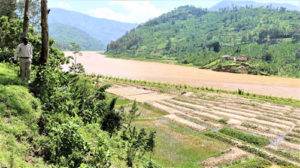 Gishwati Mukura National Park can also be accessed from Uganda’s Mgahinga and Bwindi Impenetrable National Park. You can combine gorilla trekking in Uganda with a visit to Rwanda and the Gishwati-Mukura National Park. One can hire a public bus or vehicles but we recommend that you use the services of a professional tour operator for the best experience in the park. Tour operators can help you organize every aspect of your trip, leaving you with the task of only showing up. Tour Operators tend to know their way around the park and have connections with park authorities which can prove to be very important during your tour of the park.
Gishwati Mukura National Park can also be accessed from Uganda’s Mgahinga and Bwindi Impenetrable National Park. You can combine gorilla trekking in Uganda with a visit to Rwanda and the Gishwati-Mukura National Park. One can hire a public bus or vehicles but we recommend that you use the services of a professional tour operator for the best experience in the park. Tour operators can help you organize every aspect of your trip, leaving you with the task of only showing up. Tour Operators tend to know their way around the park and have connections with park authorities which can prove to be very important during your tour of the park.
Accommodation in Gishwati Mukura National Park
There are few high quality hotels and lodges within the Gishwati-Mukura National Park apart from Gishwati Lodge that is operated by Wilderness Safaris. As a new park, there are fewer visitors compared to the more established national parks in Rwanda. As more lodges are built, it is expected that more and more visitors will come to the park hence bringing more revenue to the government and rehabilitation programmes currently running.
It is important to note at this point that though there are limited high end accommodation options, a visitor will always find a place to stay in while exploring the park. Since the park is very close to Nyungwe and the Volcanoes National Park, one can simply use hotel in these parks and only go for activities in Gishwati-Mukura. Budget and adventurous travelers can choose to stay in one of the campsites in the park.
Gishwati Lodge: This lodge is a luxury lodge operated by Wilderness Safaris. It is the best lodge in the Gishwati-Mukura National park. Gishwati Lodge has about six luxury chalets which house less than 15 guests at a time. The lodge offers privacy and was built with amazing views of the park. Visitors are 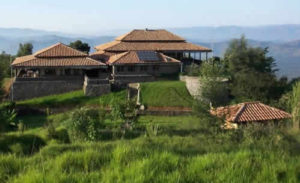 served by highly skilled, experienced and friendly staff who are trained to treat residents with great attention. Gishwati lodge combines adventure, conservation and luxury into one to provide an unforgettable experience for travelers. The lodge is perfect for those who wish to explore the national park and visiting one of the communities of chimps or golden monkeys in the forests. Other activities possible while at the lodge are nature walks/hikes, bird watching and photography. Gishwati lodge is not all about comfort. It is where most of the parks wildlife conservation and Eco-tourism ideas/projects are sold to potential donors.
served by highly skilled, experienced and friendly staff who are trained to treat residents with great attention. Gishwati lodge combines adventure, conservation and luxury into one to provide an unforgettable experience for travelers. The lodge is perfect for those who wish to explore the national park and visiting one of the communities of chimps or golden monkeys in the forests. Other activities possible while at the lodge are nature walks/hikes, bird watching and photography. Gishwati lodge is not all about comfort. It is where most of the parks wildlife conservation and Eco-tourism ideas/projects are sold to potential donors.
